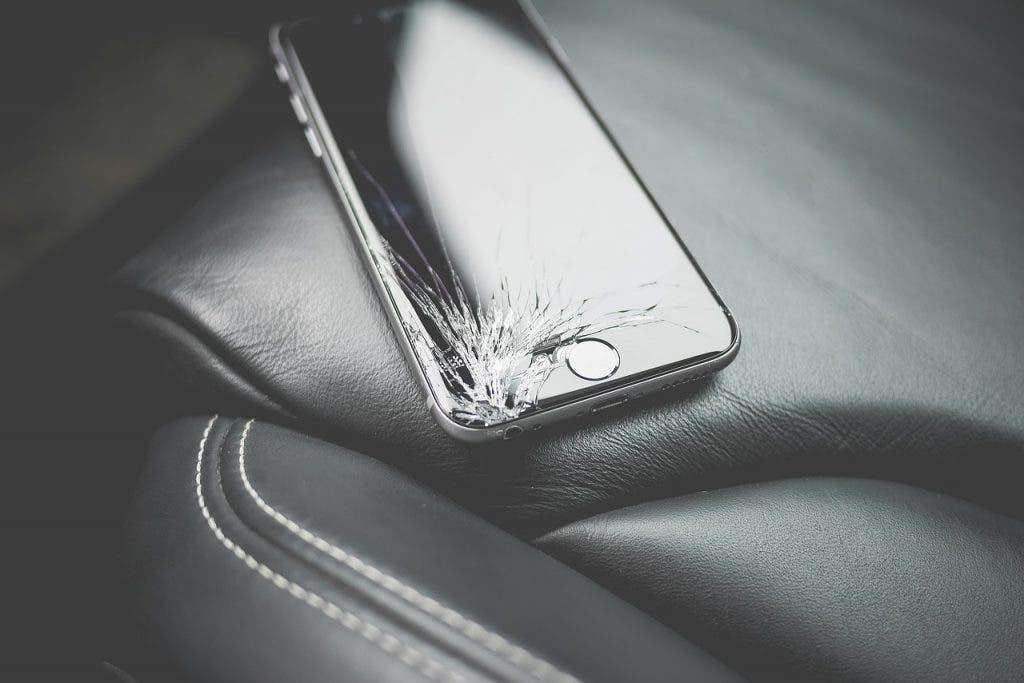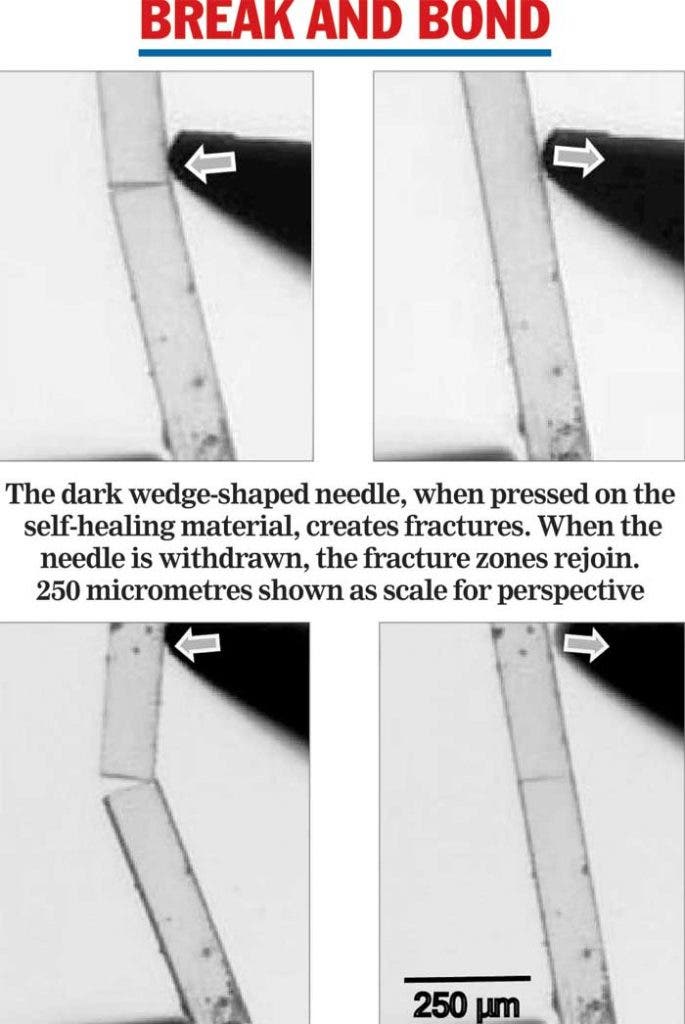
Smartphones today are super powerful but can also be equally expensive. This is quite inconvenient given that phones have a proclivity for dropping on the floor. It’s no wonder many people have had their phone screen shattered at least once before. If it hasn’t happened to you yet, chances are you have some form of anxiety caused by a fear of dropping your phone. But perhaps in the future, this anxiety may be dispelled by new technology that allows screens to self-repair within moments after impact with a nasty concrete pavement.
Researchers at the Indian Institute of Science Education and Research (IISER) in Kolkata and the Indian Institute of Technology Kharagpur recently demonstrated a self-healing crystalline material in the journal Science, which when broken can reassemble the broken pieces into the original form.
“Wound healing in living tissue and bone has inspired many synthetic self-healing polymers, gels and other soft materials in the last decade or so. However, replicating such repair in crystalline materials has remained a challenge as they are rigid and prevent diffusion of material at the damaged part due to dense and regularly arranged molecules in them,” the researchers said in a statement.
The researchers led by Professor C Malla Reddy embarked on this study with the aim to prove that mechanical impacts do not necessarily have to result in irreparable damage. With this in mind, they developed a type of solid material with a polar arrangement in the crystalline state (positive end to negative end). If the material is broken somewhere along its surface, there will be opposite electrical potentials at the fractured surfaces.
This organic material is piezoelectric, meaning it can convert mechanical energy into electricity and vice-versa. A prime example of this phenomenon is the microphone in your phone that converts mechanical acoustic waves into an electrical signal that is later decoded on the other end and converted back into sound so the other person can hear you speak. But piezoelectricity apparently also plays a major role in initiating self-healing in natural biomaterials, such as damaged bone and collagen following a mechanical injury.

Individual needle-shaped crystals, each around 2 mm long and 0.2 mm wide, join together thanks to powerful attractive forces developed between their surfaces. When a fracture occurs, these forces join the piece back together without the need for any external force such as heat or electricity, unlike previous self-healing materials presented by other researchers.
“Since the previous decade, tremendous research has been done to find self-healing [properties] in the unnatural polymers, gels and composites which are soft and amorphous in nature. Various strategies have been employed to mimic nature but almost all of them need at least one stimulus such as heat, light, solvent or a chemical healing agent. And universally all materials fail when the broken parts fall apart’, Professor Reddy said.
And unlike other self-healing materials, which tend to be soft and amorphous, this particular material is up to ten times harder and has a crystalline structure, making it ideal for electronics.
It’s not clear whether this material could be used to coat smartphone screens since that would require some complementary properties that do not interfere with the user experience (i.e. ensuring the screen is still responsible when tapped). However, experiments showed that the material exhibits strong polarisation and non-linear optical response. Couple with its self-healing ability, this could make it ideal for optical sensing, high precision metrology, and optical nano probing among others.









